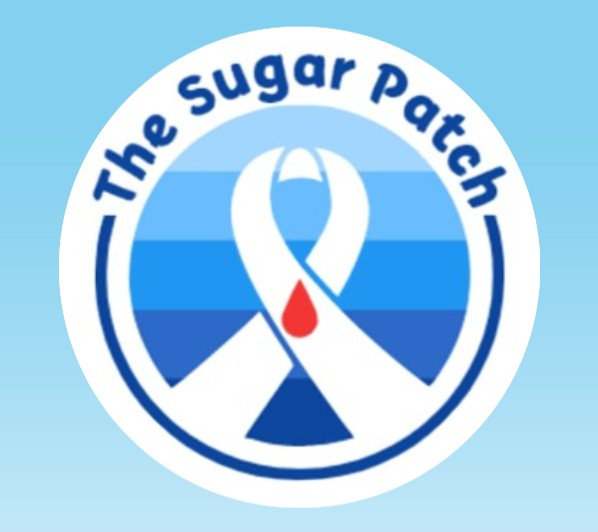CLINICAL DATA SUMMARY FOR THE SUGAR PATCH LLC OVERLAY AND BARRIER ADHESIVE TAPE
Medical Adhesive: Sodium-Based Non-Latex Acrylate
Material: Spunlace Nonwoven Polyester Tape material with Sodium-Based Non-Latex Acrylate Adhesive
Effective: November 2017
The Sugar Patch LLC tape has been subjected to the following safety evaluations:
In Vitro Cytotoxicity
The test was to determine the potential for cytotoxicity based on the requirements of International Organization for Standardization (ISO 10993-5): Biological Evaluation of Medical Devices- Part 5: Tests for In Vitro Cytotoxicity. Triplicate wells were dosed with a 1cm x 1cm portion of the test article. Triplicate wells were dosed with a 1 cm length of high density polyethylene as a negative control. Triplicate wells were dosed with a similar portion of latex as a positive control.
Each was placed on an Agarose surface directly overlaying a sub-confluent monolayer of L-929 mouse fibroblast cells. After incubating at 37 degrees C in the presence of 5% CO2 for 24 hours, the cultures were examined macroscopically and microscopically for any abnormal cell morphology and cell lysis.
The test article showed no evidence of causing any cell lysis or toxicity. The test article met the requirements of the test since the grade was less than a grade 2 (mild reactivity).
MEM Elution
An additional in vitro study was conducted to evaluate for potential cytotoxic effects following the guidelines of International Organization for Standardization 10993-5: Biological Evaluation of Medical Devices, Part 5: Tests for In Vitro Cytotoxicity. A single preparation of the test article was extracted in single strength Minimum Essential Medium at 37 degrees C for 24 hours. The negative control, reagent control and positive control were similarly prepared. Triplicate monolayers of L-929 mouse fibroblast cells were dosed with each extract and incubated at 37 degrees C in the presence of 5% CO2 for 48 hours.
Following incubation, the monolayers were examined microscopically for abnormal cell morphology and cellular degeneration.
The test article extract showed no evidence of causing cell lysis or toxicity. The test article met the requirements of the test since the grade was less than a grade 2 (mild reactivity).
Primary Skin Irritation
The test article was evaluated for primary skin irritation in accordance with the guidelines of ISO 10993 Biological Evaluation of Medical Devices – Part 10: Tests for Irritation and Delayed-Type Hypersensitivity. Two approximate 25mm x 25mm sections of the test article and control article were topically applies to the skin of each of three rabbits and left in place for 24 hours. The sites were graded for erythema and edema at 1, 24, 48, and 72 hours after removal of the single sample application
There was no erythema, and no edema observed on the skin of the animals. The Primary Irritation Index for the test article was calculated to be 0.0.
The response of the test article was categorized as negligible.
Guinea Pig Sensitization
The test article was evaluated for the potential to elicit delayed dermal contact sensitization in the guinea pig based on the requirements of ISO 10993-10, Biological Evaluation of Medical Devices, Part 10: Tests for Irritation and Delayed-Type Hypersensitivity. The test article was occlusively patched to the intact skin of ten animals for 6-8 hours, three times a week over a 3 week period. The control article was similarly patched to 5 animals.
Following a 2-week recovery period, the ten test and five control animals were occlusively patched with the test and control article. All sites were observed for evidence of dermal reactions at 24 and 48 hours after patch removal.
The test article showed no evidence of causing delayed dermal contact sensitization in the guinea pig
All materials used in manufacturing the tape and adhesive for The Sugar Patch LLC are derived from, and made in, the USA.
UTMC Study #05-011345 (all)
It is the responsibility of our customers to determine final suitability of our products for their application. Final testing of THE SUGAR PATCH LLC tape for use with a medical device is the responsibility of the consumer.
Clinical Testing Provided By: Medical Materials and Technologies Center
Critical & Chronic Care Solutions - University of Texas Medical Sciences Center
Houston, Texas
PRODUCT CLINICAL DATA SUMMARY
The Sugar Patch LLC
Spunlace Nonwoven Polyester Tape material with Sodium-Based Non-Latex Acrylate Adhesive
Effective: November 2017
THE SUGAR PATCH LLC
122 COUNTY ROAD 386D
HENDERSON, TEXAS 75654
USA
